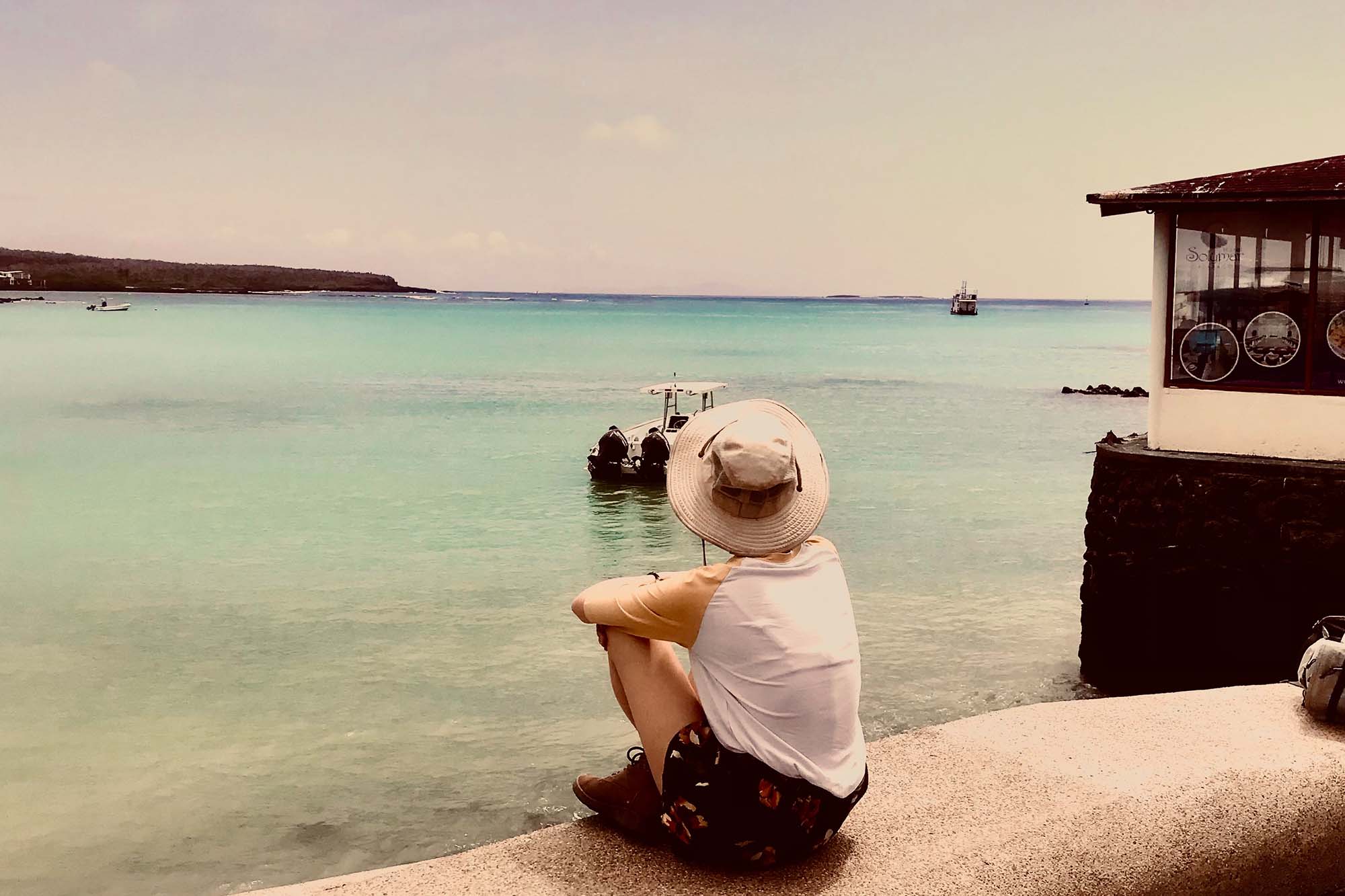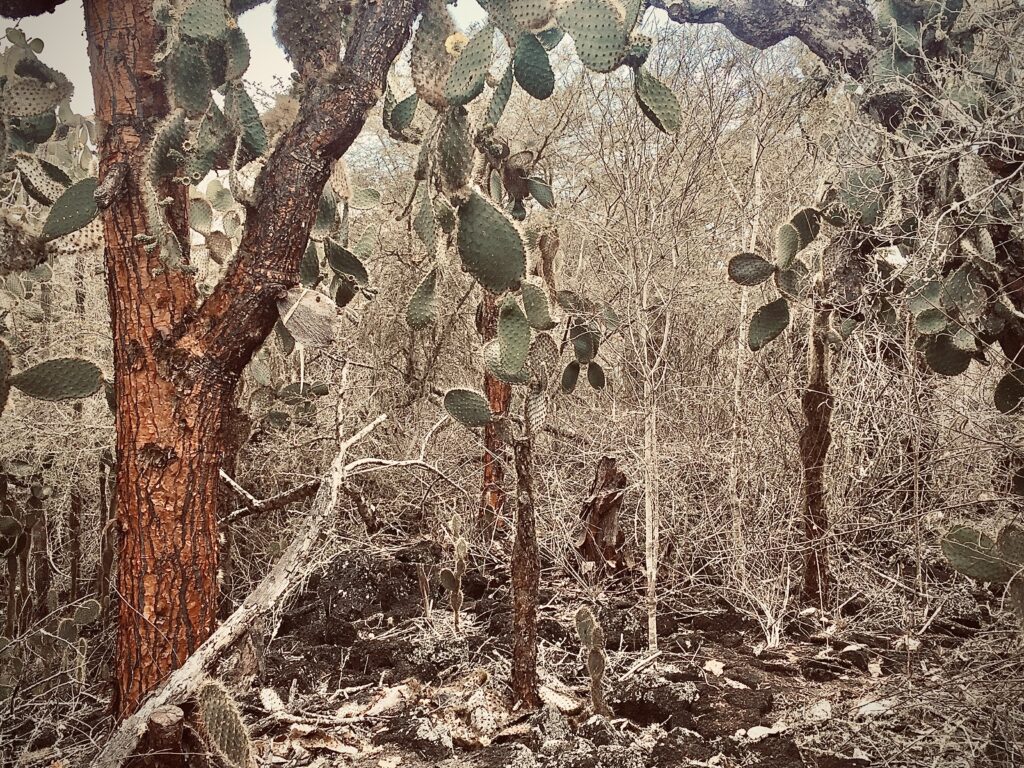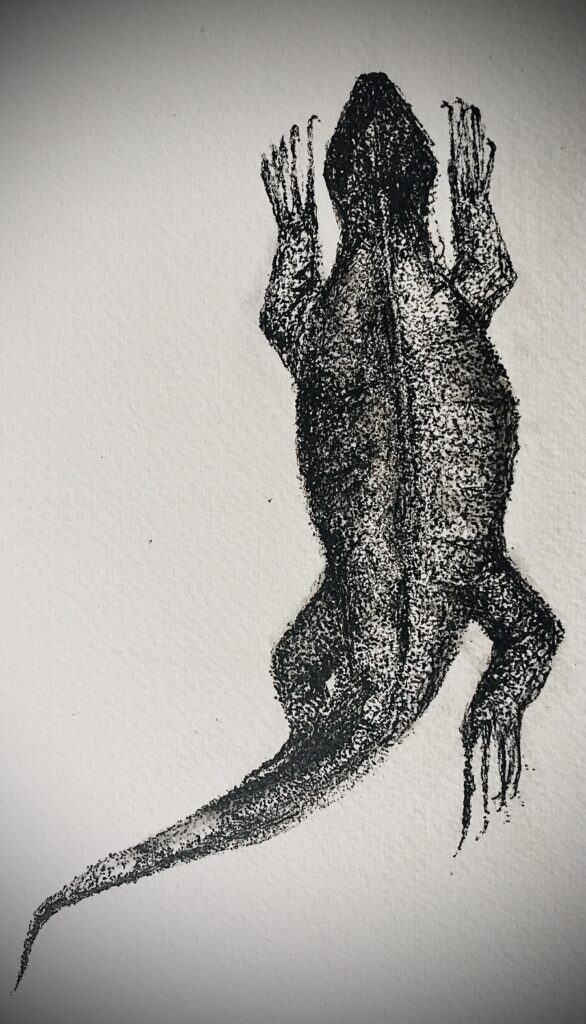
To whom It may concern,
No, avian vampire flies do not parasitize vampires.
January 31, 2022, Week 02 – Isla De Santa Cruz, Ecuador

Philornis downsi is a fly that I’ve mentioned in my past couple letters, but I haven’t talked much about its importance, or our project for that matter. Originally, it was suggested that the fly be named “Vampire Fly.” That name was rejected, because evidently it could be mistaken for a fly living on vampires. As surprising as it may be, Philornis lives on a slightly less chiropteran host: birds. So, the name was changed to “Avian Vampire Fly.”
The fly is well known in the Galápagos because its larvae are harmful to bird nestlings. The larvae suck blood, hence the “vampire” part of their name. The interesting part of this relationship is that in years when the islands get more rain, the mockingbirds aren’t affected by the flies. When there are more rainstorms, there is more food for the birds, and the babies in the nest beg more for food. The parents will visit the nest more often with food, and “save the babies” by giving the nestlings enough food to overcome the vampire flies. While this is great news for the mockingbirds, the nearby finch nests are also harmed by Philornis, and they don’t seem to have the same defense. Our project is studying how the flies move from nest to nest, and how the different birds are affected.
This week, I started school again online. Staying home out of the sun, and away from the cacti is nice… sometimes. Though I thoroughly recommend against plotting linear relationships on a graph when the other option is field work. Austin and I stay home a few days a week, and do homework, and the other days we go to La Barranca to help catch birds, and look for nests. We usually take one day off and either stay at the house, or explore somewhere. Yesterday we went to Tortuga Bay. There, we saw a Spotted Eagle Ray, a Cow-nosed Ray and a small shark. There were lots of marine iguanas which look a bit ridiculous. They sit on the beach and when they decide to swim, they walk into the water and start paddling around.
Speaking of the wildlife here, I got some great questions this week!

From Janet
Q: I’m wondering how much humans are affecting the wildlife there.
A: Hi Janet, great question! The Galápagos Islands are all part of the national park, so the wildlife, and land are protected by the park service. Only 3% of the islands are inhabited by people. Puerto Ayora (the town I am currently in) is the biggest town. Around 12,000 people live here and about 150,000 people visit the Galápagos each year. The people here do impact the wildlife some, but, the impact is quite small, and we do everything we can to keep the wildlife happy and healthy.
From Brady and Maddie
Q: What kind of food are you eating in the Galapagos?
A: Hey Brady and Maddie, thanks for the question! Well, the most interesting food in my opinion is called Ceveché. It’s a type of soup, but rather than broth, it’s based on lime juice and it’s not hot, it’s cold! It usually has onions, and tomatoes, or peppers in it, and you can pick between shrimp, or fish. The best part: it has popcorn on the side. Weird, right?
Some days, Goberth, who drives us to the field station in the morning brings us fruit from the trees near his house. We have lots of pineapple, and probably 20 pounds of bananas that aren’t ripe yet hanging from the ceiling on our front porch.
Thank you for those questions! It was super fun to hear from you guys! That’s about it for this week, I hope we get more rain soon!
If you are interested in following our expedition, check for new letters each week on the University Webpage, where you can find blog posts, and ask questions.
Until next week . . . signing off!
—Nora

Read all past letters through these links:
#1 #2 #3 #4
Link to landing page here
